Differences Between Control Valves and Ball Valves
Home
Differences Between Control Valves and Ball Valves
The two most common types of valves you will find in any industrial setting are control valves and ball valves. Belonging to the shut-off valve family, ball valves are an essential part of an industrial system. They are used for regulating the flow of different kinds of mediums and can be found in various sizes. Control valves are mainly used for throttling media through the pipeline. There are many kinds of control valves used in industries, each serving a different purpose.
This blog is designed to help you see the difference between control valves and ball valves, their unique functions, and their applications. This to help you decide which type of valve is best suited for your needs. Read on to learn more.
As the name suggests, control valves are used to control the flow of the medium through a pipeline. The controller on a control valve gives the signal to regulate the size of the flow passage whereby allowing or stopping the flow of the medium. Control valves can be effectively used to manage the flow rate, pressure, temperature, and level of the medium in any piping system.
Control valves can be operated using hydraulic, pneumatic, or electric actuators. Sometimes valve positioners are used in addition to the actuators to help the valve attain the required degree of opening. These valves are available in different sizes, types, and configurations. Control valves are commonly known as ‘“the final control element’ as they do all the physical work of regulating the flow of the medium.

Shut-off valves are an essential element in any piping system. Their main function is to provide a tight seal when closed to prevent any leakages of the medium. Ball valves are the most popular kind of shut-off valves. These valves feature a simple design and operation and can be actuated manually, electrically, hydraulically, or pneumatically.
Ball valves are wide duty valves that can be used across different industries, functions, and types of mediums. They are commonly called ‘quarter-turn valves’ as they require a 90-degree turn of the actuator to operate. The quarter-turn allows for quick opening and closing of the valve reducing valve operating time and reducing the possibility of leakage.
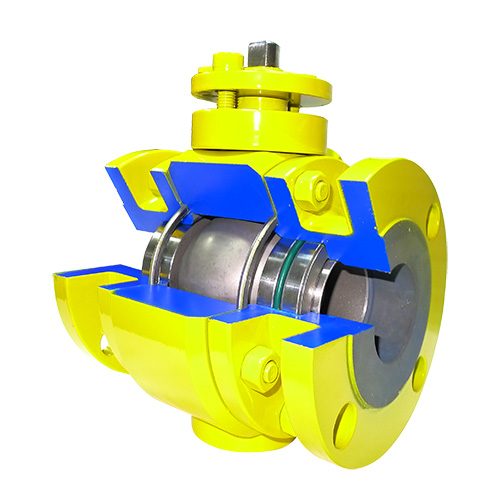
Technically ball valves are also a type of control valves, specifically rotary motion control valves. However, there are many differences between ball valves and linear motion control valves. Here are some of those differences and an explanation of how they affect the performance of each valve.
One of the main differences between control valves and ball valves is the way they are structured. While the main components of the valve are the same, the shape, size, and configuration of these components are different.
Linear motion control valves usually have a spherical structure that features a valve body, actuator, positioner, and accessories. Linear motion control valves are named so because their discs function in a linear motion. Common linear motion control valves include globe valves, gate valves, diaphragm valves, and pinch valves. Since globe valves are one of the most common types of linear motion control valves, here is a look at their cross-section.
The valve body houses all the internal parts of the valve including the bonnet and trim. The actuators may be electric, hydraulic, or pneumatic and they control the opening and closing of the valve. Positioners are used to aid the actuators in maintaining the desired set-point. Control valve accessories include electro-pneumatic transducers, handwheels, limit switches, position indicators, and pressure regulators.

Ball valves fall under the category of rotary control valves because of the way they function. Structurally ball valves are normally round or spherical in shape. They are called ball valves because of the structure of their disk which resembles a hollow ball. These valves feature four basic parts called the body, stem, disk, and seats. The body of a ball valve may be made from metal, plastic or metal with ceramic. The ball valve is often chrome plated for durability, especially the carbon steel ball valve.
Ball valves are usually actuated manually using handwheels and gears. Larger sized ball valves can be actuated electronically or pneumatically. These valves are very versatile when it comes to their structure. Whereby you can customize them to have double block and bleed capabilities easily.

Control valves and ball valves may have a core function, that of regulating the flow of media through a pipeline. However, they go about doing that in different ways.
Control valves are normally used for both controlling the flow of media and for throttling purposes. Globe valves feature a spherical disk that lies perpendicular to the seats in the valve. As the actuator moves the disk rises to open the valve and allow its flow. To close the valve the actuator pushes the stem and the disk back down.
The linear motion of a globe valve creates an annular gap between the seat ring and the disk which is slowly filled as the valve closes. This feature allows globe valves to have throttling capabilities that are needed to regulate the flow of media. Control valves are normally actuated either electronically, hydraulically or pneumatically. Air actuated valves only need compressed air to work, electronic valves need extra cables and switchgear while hydraulic valves require high-pressure supply and return lines for the hydraulic liquid.
Ball valves feature a hollow spherical ball as their disk. They are called quarter-turn valves because you only have to turn the actuator 90 degrees to open and close the valve. To open the valve, turn the actuator once, this will move the stem and hence the ball so that the hollow side is parallel to the flow of media. To close the valve, move the actuator again to turn the solid side of the ball towards the flow, thus blocking it.
Ball valves provide a quick shut-off as the ball rotates as soon as the actuator is turned. For this precise reason, they cannot be used for throttling purposes. These quick-acting valves have very little pressure drop and are thus suitable for a range of applications. Since they don’t need to be used for throttling purposes, most ball valves are actuated manually, while air operated ball valves are normally used in industries.
Both ball valves and control valves are used to start and stop the flow of media through the pipeline. But while control valves can also be used for throttling, ball valves cannot.
Because of their unique design and characteristics, control valves are well suited for applications that require precise flow control, frequent and wide throttling of media, and high pressure drops. They are suitable for most liquids, gasses, vapors, and corrosive media. Control valves like globe valves are normally used in cooling water systems, fuel oil systems, feedwater or chemical feed systems, boiler and main steam vents and drains, turbine oil systems, and more.
Control valves are well suited for high-pressure and high-temperature applications. They are usually actuated electronically because of their size and the power required to operate them. They are used in applications where tight sealing and flow control are required and where pressure drop is not an issue.
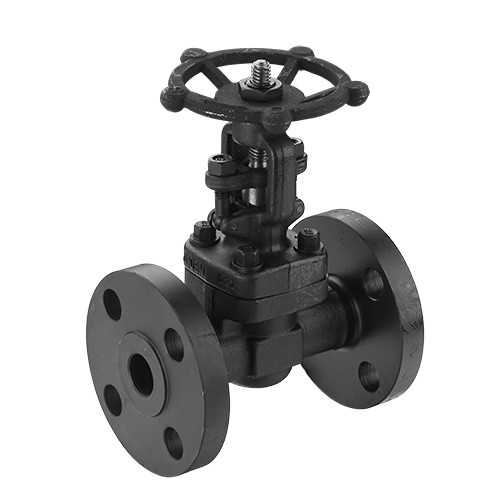
Ball valves are suited for applications where tight shut-off is required. They are suitable for liquids, gasses, vapors, and hydrocarbon services. You can find ball valves in flowing systems on ships, chlorine manufacturers, and fire safe protection services. They can easily be used with higher temperature fluids and are an excellent choice for chemical applications.
Ball valves provide bubble-tight shut-off with low torque. Metal seated ball valves are suited for high-temperature and high-pressure services. Ball valves can be used in instrument tubing to connect different instruments to each other.
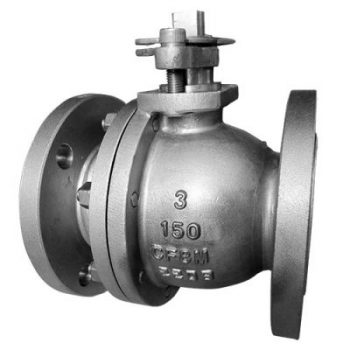
Both control valves and ball valves are available in different configurations and types each designed for a different application.
Control valves can be classified based on their operation as linear control valves and rotary control valves. Linear control valves are more suitable for throttling media, high-temperature/high-pressure operations, and larger systems. Rotary control valves are used in applications that require tight shut-off.
Control valves can also be classified based on their number of ports. Two-way, three-way and four-way control valves can be used in larger systems. Based on application you can find pressure reducing and relieving valves, cryogenic and high-temperature control valves.
In high pressure ball valves manufacturers, ball valves are available in many different types. Based on bore size you can find full-bore, reduced bore and v-port ball valves. Trunnion mounted ball valves feature an extra connection at the end that holds the stem in place making the valve stronger and leak-proof. Floating ball valves feature special seats that cushion the disk providing a tighter seal.
Double block and bleed ball valves feature two isolation valves and one vent valve. They provide tight shut-off and guarantee the safe and smooth operation of the rest of the system . Ball valves may have a one-piece, two-piece, or three-piece construction. They may have top-entry or side-entry and flanged, welded, or threaded end connections.
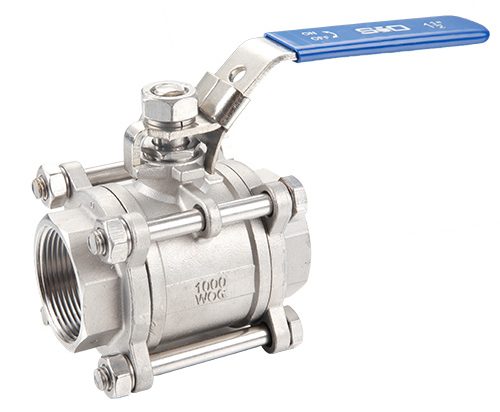
Factors
Type of Shut-off Required
Degree of Precision
Frequency of Adjustments
Flow Capacity
Cavitation
Type of Media
Type of Operation
Maintenance Requirements
Cost of Valve
Size of Valve
Ball valves cannot be used for throttling purposes because they offer less control over the flow of media. Generally, linear motion control valves offer greater control at precision settings like flow rate, pressure, temperature, and more. Ball valves don’t offer the same precision as their adjustment isn’t proportionate to the amount of flow that the hollow center of the disk provides. The slop and play between the ball and stem hinder precision control as well. Lastly, ball valves require a greater torque to open and close the valve that hinders finer adjustments.
However, some kinds of ball valves like ball valve flange type, can be used as control valves in certain applications. Trunnion mounted ball valves have additional anchoring allowing for greater adjustments. The stem and ball have less play so the valve has more flow control. V port ball valves have a v-shaped ball which makes for a more linear flow. Hence providing more control over the flow of media.
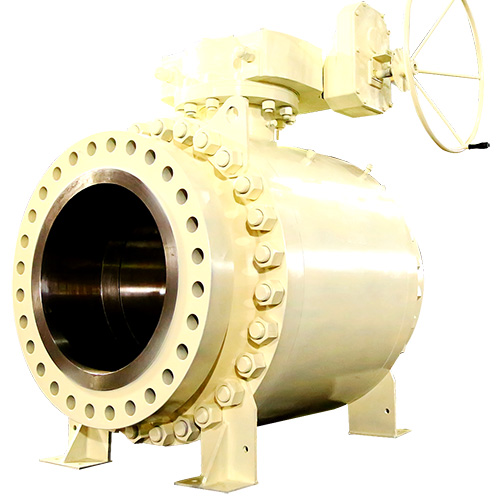
Both ball valves and control valves are needed in a piping system. If you’re looking for one of these valves for your business, check out our collection of high-quality industrial valves.
Copyright© 2019 Ninbo SIO Fluid Equipment Co., Ltd. All Rights Reserved.